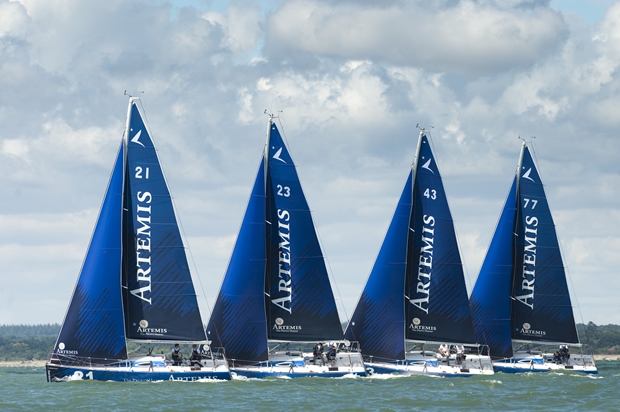
"A mix of Dragon's Den, the Apprentice and Super Stars"
The Artemis Offshore Academy is shortly to announce its eight finalists, the development squad, who over this winter will in turn fight it out for the chance to win a Figaro campaign culminating in participation in the 2011 La Solitaire du Figaro, backed by the Edinburgh-based investment company.
The Artemis Offshore Academy is a vital building block for shorthanded offshore racers, something for a long time identified as being one of the shortcomings of British campaigns in the Mini, Figaro, Class 40 and IMOCA 60. Until now there has been no equivalent of the Pole Atlantique Course au Large, the famous shorthanded training centre in Port la Foret, which has spawned so many French winners in the leading shorthanded events. Today there are several such centres dotted around France’s coastline. However there are some differences between these and the new British academy. While the French ones are geared up to coach shorthanded sailors with existing campaigns, something with the Artemis academy will also offer through its ‘associate’ scheme, the British focus is primarily to identify talent and nurture them into potential Figaro/Vendee Globe winners.
Following the opening date for entries into the new Artemis Offshore Academy in August, there were 53 applications. These were then whittled down to 32 (a full list is here), after their applications were poured over by the selectors, led by John Thorn, the academy’s newly appointed Performance Director. While Thorn admits he has no previous experience in the Vendee Globe, Figaro circuit or indeed any shorthanded offshore racing, he is amply qualified to head up the academy. Until now he has been the RYA’s National Sailing Coach, a giant managerial role that required him to oversee the RYA’s portfolio of coaching and training schemes run by 2,500 or so centres both in the UK and abroad. he is also personally a Yachtmaster Instructor and Examiner.
“The applicants had a wide variety of backgrounds, from dinghy sailors who had been through the RYA high performance squads to experienced keel boat sailors or yacht racing people,” he says. “They all had to fill in quite detailed application forms. We were looking at their past results, past experience, what they have done, who they are and how old they are. We also looked at physical traits like weight, height, body mass, etc.”
Those chosen ranged from youngsters such as Henry Bomby and Jackson Bouttell, both 19 and with some offshore experience, to top Cadet sailor Sam Matson, 20 year olds such as OSTAR competitor Oscar Mead and National Match Racing Champion Sam Goodchild, who earlier this year had trialled for the equivalent scheme in France, the Challenge Espoir Region Bretagne, where there is also a Figaro campaign for the winner. At the opposite end of the spectrum were those with previous experience in Minis, such as Ollie Bond and Ben Rogerson, in Figaros - Nigel King and James Bird, in Class 40s - Concise’s Tom Gall, Ian Munslow, and Route du Rhum winner Phil Sharp and even a past Vendee Globe competitor in Conrad Humphreys.
Within this wide mix was even one Olympic medallist in Sydney 49er silver medallist Simon Hiscocks.
“It was just the opportunity,” says Hiscocks of why he applied. “I stopped Olympic sailing about a year ago and I have not done any particular sailing project since and I started missing being involved in that sort of thing. I have always had a bit of an inkling to do some shorthanded sailing – I don’t know why!” He admits that after the ISAF Worlds in Cascais in 2007 when he failed to get selected to go to Beijing in the 49er, he considered putting a Mini campaign together for himself, but was put off by the cost.
While 37 year old Hiscocks admits that he has been quite bad about making the transition from dinghies into big boats, he has had the opportunity to sail IMOCA 60s in the past. In 2005 he raced in the Gotland Runt and in the Rolex Sydney Hobart with Alex Thompson aboard Hugo Boss, as at the time both were members of Team Volvo for Life.
This year he once again sailed with Jonny Malbon on the Artemis Open 60 in the RORC’s SevenStar Round Britain Race, an experience Hiscocks says he enjoyed much more than the previous two races. “Before there were eight of us on the boat, so each watch had four people on it, whereas this last one it was literally two up at a time and I really enjoyed that immensely. And we ended up having something to race for.” For much of the race Artemis was a contender for a win under IRC, and eventually managed to take the prize at the same time securing the IMOCA 60 record for the lap of the British Isles.
So what did Hiscocks come away with? “I learned that the autopilot is faster than most of us, most of the time. That was an eye opener– I thought ‘why are we putting this pilot on’ then sitting down and watching it? It seemed completely bizarre. You could definitely beat it, and you could beat it when it was fast as well, but it was really hard. It was in pretty horrible conditions when it was at its best.”
Having come directly from not just a dinghy, but a lightweight high performance skiff, Hiscocks admits that he is still getting used to the Open 60. “When I first sailed with Alex, I just did not have a clue. Alex would come on deck and say ‘ease that’ and I’d ease it and the boat would come alive again. I hadn’t got a feel for it at all. This time maybe I was a bit more aware that the feel wasn’t so immediate and it was more a case of looking at the numbers on that. It is a big bus. On a dinghy you can tell how much load there is in the sheet so if it pulls a bit harder you let go and that is quite instinctive. With a yacht you need to use your eyes, you have to tune in some different senses.”
Back to boot camp
Over the course of September the Artemis Offshore Academy 32 was divided into teams of eight, each group separately invited down to Weymouth for a two and a half day assessment that included a ‘Fantasy Figaro Campaign’ (copyright Charles Derbyshire). “A cross between Dragon’s Den, the Apprentice and Super Stars” as Hiscocks describes it.
Even for the experienced John Thorn, the assessment was unique due to the diverse backgrounds of those taking part. “The trouble was the people we were looking to select didn’t necessarily have a track record in sailing Figaros or sailing in long distance offshore singlehanded events, so unlike any other selection process we have at the RYA, there is no track record or performance record you can easily compare. We batted a few ideas backwards and forwards and what we realised was that we weren’t going to answer any questions by getting them to sail up and down in boats that they weren’t familiar with. So we had to think of something that somehow got underneath the CV and tried to find out a little bit more about the person as well as their sailing ability and their past performance.”
The two and a half days began with psychometric testing (‘If I sense that people dislike me, I feel very uncomfortable’: True/False, etc) and physios for each participant, including work outs on rowing machines and timed runs.
There followed the Dragon’s Den element where each sailor had to deliver a pitch for sponsorship in front of a panel of judges, including Thorn, Frank Citeau who runs the training centre in La Grande Motte, where the eight finalists will be heading over this winter, OC’s Charles Darbyshire, Mike Hart, the RYA’s Coaching Development Manager, and management training advisor Brian Collier from GRA Associates.
“The product they were selling to themselves – why should we invest in you?” says Thorn, while Hiscocks admits: “Actually I didn’t mind it in the end. I wouldn’t have liked to have done it a few years ago when I was a bit more phased by that sort of thing.” No doubt running his own business for a few years now will have helped.
Then the fun really started with the Fantasy Figaro Campaign, which took place over the final 36 hours of the assessment. Thorn explains: “The idea was to try and simulate the pressures and the environment they might experience in putting together a Figaro campaign. First of all there were some activities they had to undertake, which involved them gathering funds, solving problems and working together as smaller groups and larger groups, which you’d probably recognise as management training tasks, but they were all wrapped up in the sailing world.”
If the groups and individuals worked hard enough and succeeded in their various tasks then they would earn fantasy money that would go towards their buying or chartering and ultimately equipping a Figaro and then competing in a series of Figaro races.
“There were things like you were given a brief and had to pick up a canister in the middle of a room without touching the floor and those things earned us some rewards as they each had a value attached to them in fantasy money,” says Hiscocks. “Some were random tasks like going to get a photo of yourself next to the clock tower in Weymouth, so quite random things, but with the skills sets were vaguely relevant to what you’d do.”
Among the tasks was passing each of the team through a spider’s web the selectors had built, without anyone touching the floor. They also had to raise some real sponsorship from a marine supplier in Weymouth and undertake a few sailing exercises, some blindfolded, such as a man overboard drill, sailing backwards, etc.
“I think I stuck my neck out a little bit which I wasn’t intending to do,” admits Hiscocks. “I was hoping to play the grey man, but I sort of ended up leading a fair amount. Some of that was a natural thing because there were a lot of local things to do, so we took advantage of local knowledge.”
The assessment having started at 0900 in the morning it wasn’t until 0300 the next morning that they were allowed to grab some sleep on board Artemis’ four Figaros. Of course no such test is realistic if the sailors can get a full night's sleep, and so they were then awoken ready for a briefing at 0700. “We had them disassemble and assemble a Meccano car,” says Thorn. “You try doing that at 2am when you are tired and haven’t slept for 24 hours. That was quite a challenge and it was against the clock - they had to do it inside half an hour.”
With match sticks under their eyelines, the candidates spent much of day two racing in the Figaros, with a mix of four-up, doublehanded and singlehanded on board, around one lap of a windward-leeward course. But first recalls Hiscocks “we had to negotiate with the banker about the sailing, how much we could afford.” Across his group they elected to sail with equal gear.
In the two handed races Hiscocks got a couple of second places sailing with Mini sailor Ben Rogerson. “I struggled a bit with lots of basic things that I just forgot to do, because there was so much going on and that’s when it was light! I was very pleased that I was with Ben. He was very calm which was a very good thing.” In the singlehanded races it was former Pindar crewman and Iranian captive Ollie Young who shone.
“And then of course we were all in debt, so we had to go on doing these tasks to get out of debt until about 2am,” continues Hiscocks.
More tasks were undertaken. For example they won extra points if they outperformed their initial cycling/running timed trials. According to Thorn most succeeded in this.
“Everyone I spoke to seemed to enjoy it,” said Hiscocks. “I enjoyed it, to the point where I almost forgot what the point of it was! Because it was the sort of thing you’d almost do for fun, so there was a trial in it and we were trying to win it, so you turned it into a competition, because the task earned money, and then you could score in the races. So it was entertaining – it would make good reality TV.”
The final eight have now been chosen and their names will be made public next week. The selection was based on physical results from the assessment and the observations of the selectors during the Fantasy Figaro event and the potential of each candidate in the short, medium and long terms.
“We are looking for very technically competent sailors who can be trained in some of the skills necessary to be successful in shorthanded and singlehanded offshore racing," explains Thorn of what he hopes they have found in the final eight. "We want to take technically competent British sailors with established track records, who can be involved in a strong training program, taking the best of what we know in the UK about training our Olympians put together with the best of what can find out from the French training program and hopefully come up with a Formula that gives us a fair chance of doing well in the next Vendee or the one after.”
But at the end of the day, as we have written so much in the past, it is not just sailing ability or the gift of the gab in sponsorship meetings that will enable candidates to end up winning the Vendee Globe. There are the numerous different disciplines from navigation and routing, to the personal shorthanded skills such as dealing with sleep deprivation to eating and drinking enough, to make or break ones such as the ability to fix things when they go wrong. There is also psychological strength, the ability and singlemindedness to continue when the going gets tough. Most of these traits can be learned, but some, such as practical aptitude, perhaps can’t be so easily.
“We were after people who looked at a problem and thought about how to solve it, that positive outlook,” says Thorn. “They will come up against difficulties and they will have to overcome problems and a lot of that is in the mind. It is that mysterious ability to never let a set back slow you down, self talk, that we refer to in some of the performance programs, that keeps you focussing on the positives not the negatives that have just happened.”
From here the final eight who will next go on to begin their training in Figaros out of La Grande Motte in the south of France. This training is being paid for by Artemis and will cover expenses, but will not pay a salary. “It is a contributory scheme, like the Olympic scheme, where they get all the funds they need to race but not necessarily a salary to go with it,” explains Thorn. “Our experience at the RYA is that is the best way to motivate people – not to give them everything on a plate. They still have to be hungry enough to want it and to make some sacrifices.”
Beyond the lucky eight, there will be some more limited funding available for those typically with their own campaigns or with limited time, that will form part of the associate squad.

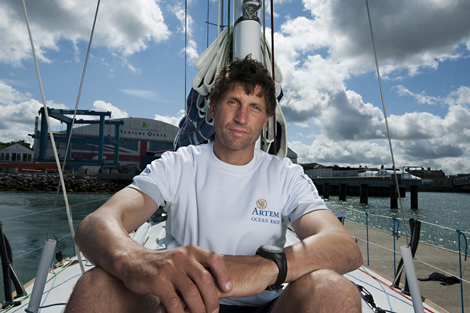
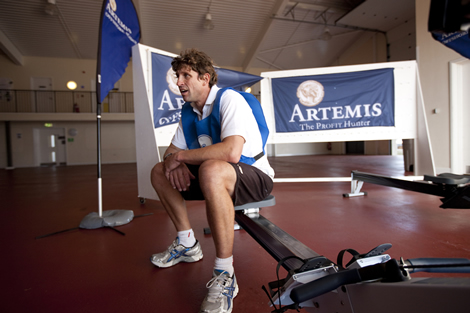
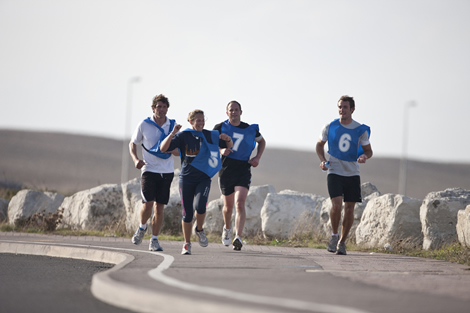
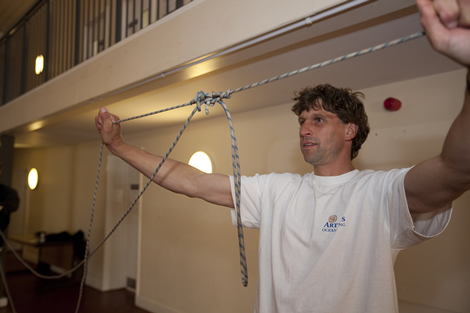
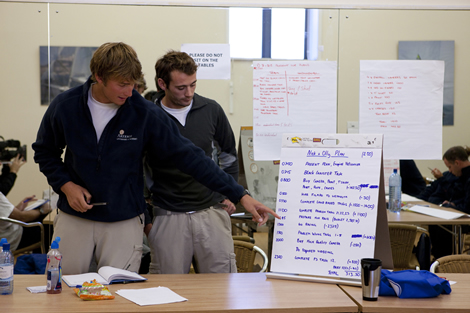
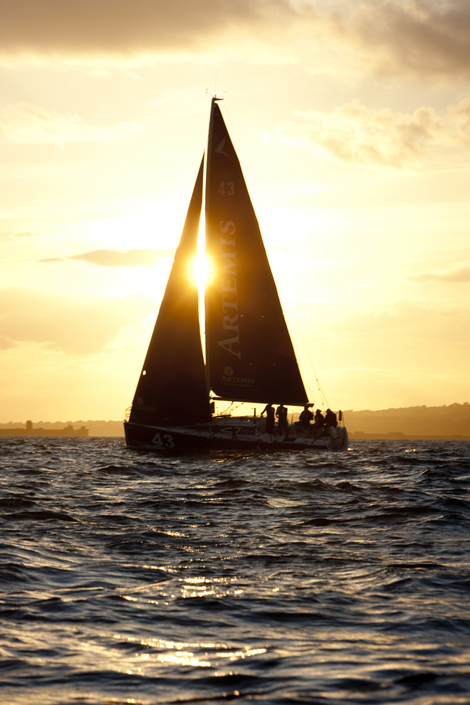
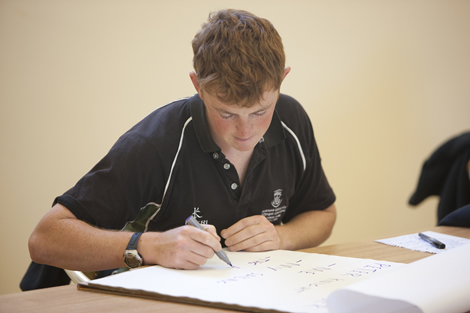
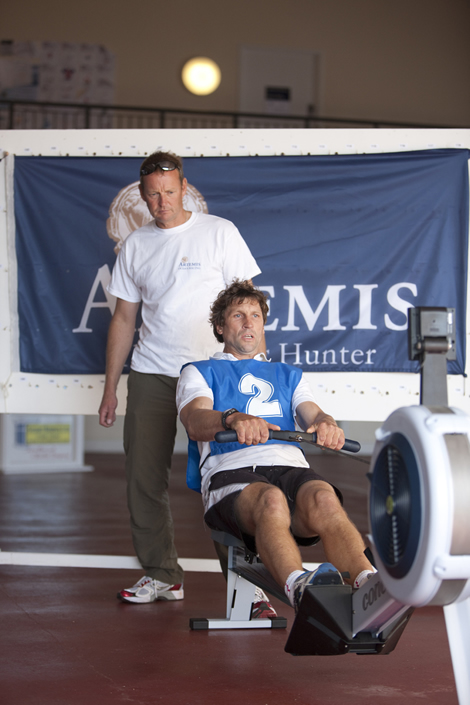
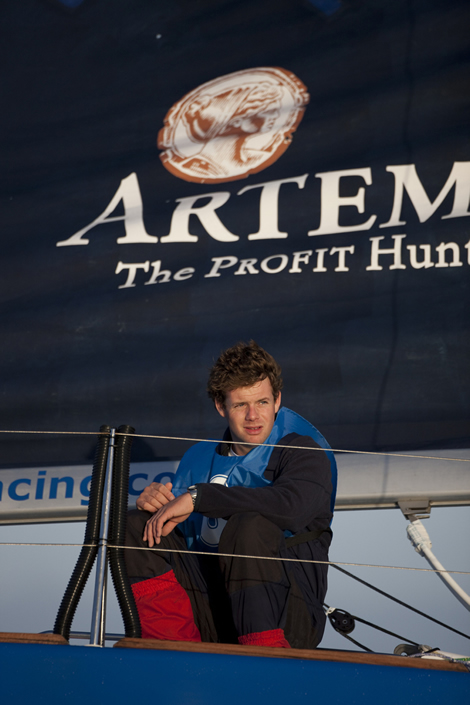
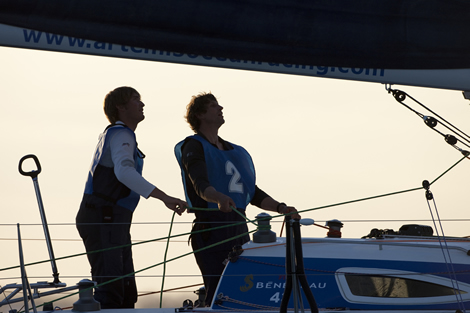
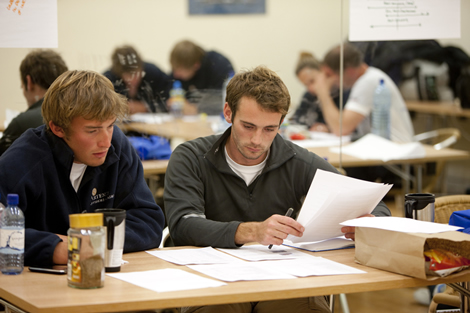
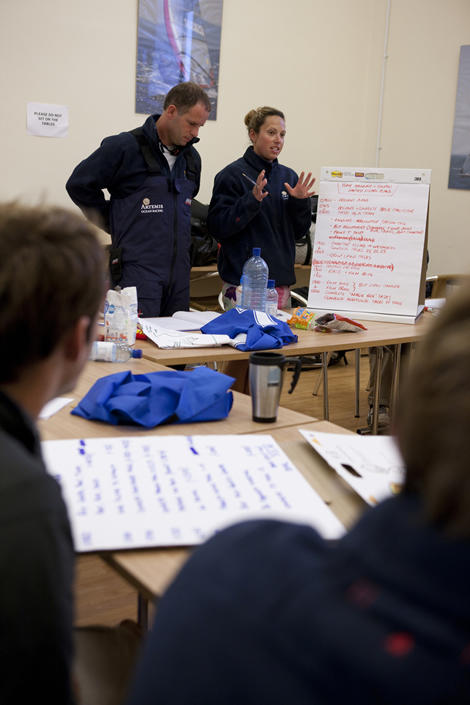
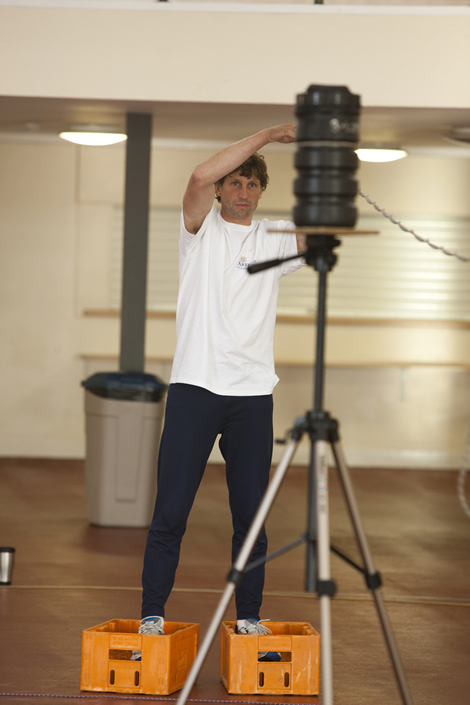









Latest Comments
231869 05/10/2010 - 16:51
5(g) SELF-STEERING Automatic and wind-vane devices for steering may be carried but not used, except in the 2-handed division when they may be used. This amends IRC Rule 14.Add a comment - Members log in